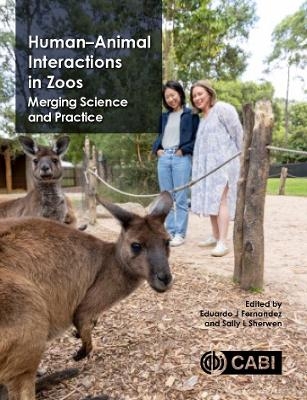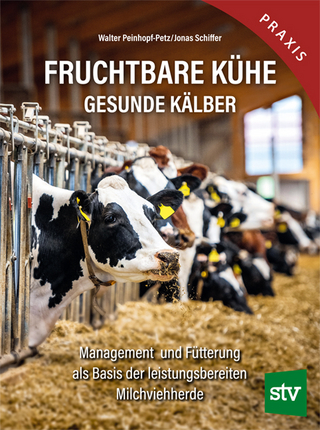
Human-Animal Interactions in Zoos
CABI Publishing (Verlag)
978-1-80062-268-5 (ISBN)
Human-Animal Interactions (HAI) are a primary welfare interest to both animal scientists and practitioners. In zoos and aquariums, the study of Animal-Visitor Interactions (AVI), including both the impact of visitors on animals (the visitor effect) and the impact of animals on visitors (the visitor experience), have become a focus for understanding HAIs in zoos. The study of HAIs in zoos has grown to consider a number of factors, including animal-staff interactions and bonds, modern exhibit design and technology, direct and indirect interactions, as well as positive and negative impacts on both animals and visitor alike. This thought-provoking book summarizes the latest research concerning the impacts of HAIs in zoos, including considerations for conducting research and managing HAIs. The book: Explores the interactions of animals with keepers, veterinary professionals, and other staff, and the effects of those interactions on the welfare of animals. Considers the impact of visitors on the well-being of animals. Covers the effects of interactions on education and the visitor experience. Outlines the use of technology to enhance experience, and improve animal welfare. Details theoretical, ethical, and practical considerations relevant to HAIs in zoos. An invaluable resource for animal behaviour and welfare scientists, students and practitioners, as well as anyone working with zoo animals.
Eduardo J Fernandez (Edited By) Eduardo J. Fernandez is a Senior Lecturer of Applied Animal Behaviour and Welfare in the School of Animal and Veterinary Sciences at the University of Adelaide (Australia). He received his Ph.D. in Psychology (minors in Neuroscience and Animal Behavior) from Indiana University, where he worked with the Indianapolis and Cincinnati Zoo. He received his M.S. in Behavior Analysis from the University of North Texas, where he founded the Organization for Reinforcement Contingencies with Animals (ORCA). Most of his past and current work involves behavioral research applied to the welfare and training of zoo, aquarium, and companion animals. His past positions include a Visiting Professorship in the School of Behavior Analysis at the Florida Institute of Technology, an Affiliate Assistant Professorship in the Psychology Department at the University of Washington, a Research Fellowship with Woodland Park Zoo, and a National Science Foundation Postdoctoral Fellowship. While working with UW and the Woodland Park Zoo, he started the Behavioral Enrichment Animal Research (BEAR) group, which conducted welfare research with many of the species and exhibits located throughout the zoo. He currently runs the Operant Welfare Lab (OWL), which is dedicated to the use of learning principles to improve the lives of animals across many settings, including exotic animals in zoos and companion animals in homes and shelters. OWL is part of the broader Animal Behaviour, Welfare, and Anthrozoology Lab (ABWAL; abwal.com). Sally L Sherwen (Edited By) Dr Sally Sherwen is the Director of Wildlife Conservation and Science at Zoos Victoria (the Conservation Organisation charged with the operation of Melbourne Zoo, Werribee Open Range Zoo and Healesville Sanctuary in Australia). Sally leads a dynamic team of scientists and specialists that develop and deliver strategic programs in conservation, animal welfare, education and environmental sustainability. Sally has a PhD in Animal Welfare Science and in previous roles has established an evidence-based research program in animal behaviour and welfare science, developed and implemented an institutional welfare assessment tool to advance welfare standards and designed and ran collaborative training courses with several NGOs for industry professionals and community groups.
I.: Introduction 1:: An Introduction to Human-Animal Interactions in Zoos and Aquariums. II.: Understanding HAIs in Zoos 2:: The Ethics of Human-Animal Interactions at the Zoo. 3:: Animal Visitor Interactions. 4:: Animal-Staff Interactions. 5:: Enhancing Visitor-Animal Interactions in the Modern Zoo: a designer’s perspective. 6:: Human-Animal Interactions, Technology, and Release Programmes in the Modern Zoo. III.: The Visitor Effect 7:: Assessing Visitor Effects on Zoo Animals. 8:: A conceptual model for understanding types of visitor effects and suggestions for improving visitor effects research. 9:: The Visitor Effect in Primates. 10:: The ‘visitor effect’ in non-primate zoo species: what do we know and where should we go next? IV.: The Visitor Experience 11:: Measuring the Visitor Experience. 12:: Types of Visitor Experiences. 13:: Maximising Zoological Education and Learning Experiences. 14:: Understanding and improving the visitor experience: how can we increase the positive social impact of animal-visitor interactions? V.: Conclusions 15:: Human-Animal Interactions in Zoos and Aquariums; Emerging themes and Next Steps.
| Erscheinungsdatum | 16.05.2024 |
|---|---|
| Co-Autor | Samantha J. Chiew, Courtney Collins, Jon Coe |
| Verlagsort | Wallingford |
| Sprache | englisch |
| Maße | 189 x 246 mm |
| Themenwelt | Naturwissenschaften ► Biologie ► Zoologie |
| Sozialwissenschaften ► Soziologie | |
| Veterinärmedizin | |
| ISBN-10 | 1-80062-268-6 / 1800622686 |
| ISBN-13 | 978-1-80062-268-5 / 9781800622685 |
| Zustand | Neuware |
| Haben Sie eine Frage zum Produkt? |
aus dem Bereich


